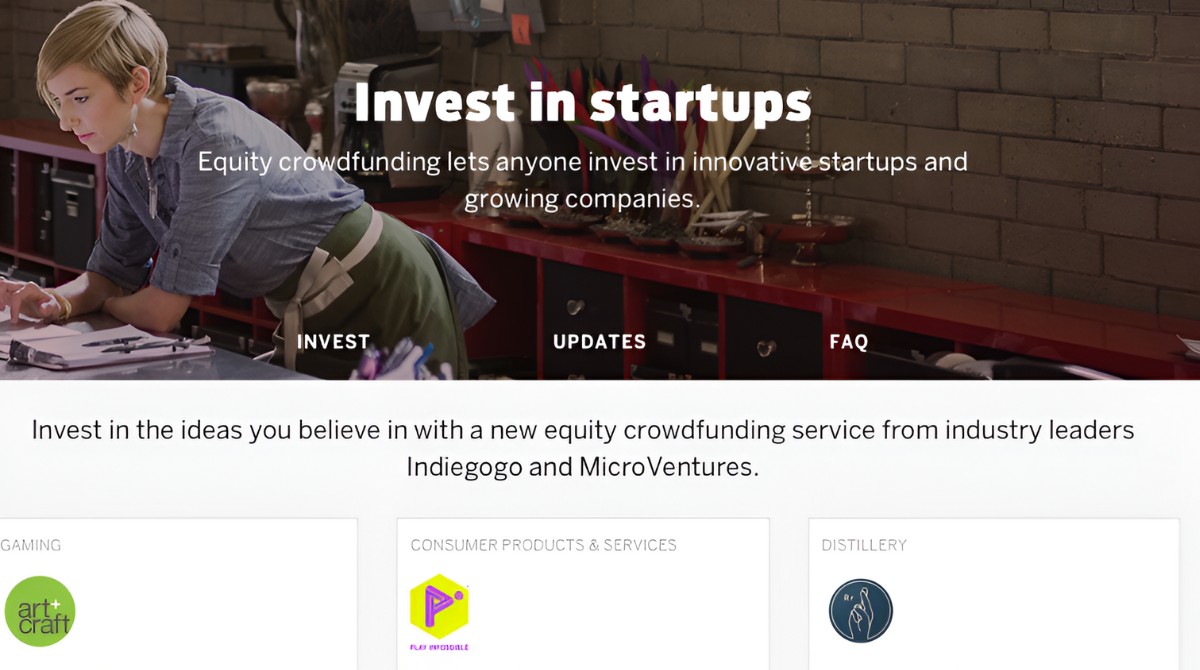Introduction
Crowdfunding has become a game-changer in the world of entrepreneurship, transforming how innovative ideas are brought to life. It has provided a new avenue for aspiring entrepreneurs and startups to raise capital and gather support from the online community. With the power of the internet and social media, crowdfunding has emerged as a popular method of funding projects, allowing people to contribute small amounts of money towards a shared goal.
Crowdfunding involves the pooling of funds from a large number of individuals, usually through dedicated crowdfunding platforms, to finance a specific project or venture. It allows entrepreneurs to bypass traditional financing methods, such as loans from banks or venture capital investments, and instead gather funds directly from the crowd. This democratization of funding has opened doors for entrepreneurs who may have struggled to secure financing through more traditional channels.
The rise of crowdfunding can be attributed to several factors. First and foremost, advancements in technology have made it easier for individuals to connect and engage with a global audience. Social media platforms, in particular, have played a significant role in spreading awareness about crowdfunding campaigns and enabling entrepreneurs to reach potential backers. In addition, the financial crisis of 2008 and subsequent tightening of lending regulations made it more challenging for startups to secure funding, leading many entrepreneurs to turn to crowdfunding as a viable alternative.
One of the key advantages of crowdfunding is its ability to tap into the collective wisdom of the crowd. By presenting their ideas to the public, entrepreneurs can gauge market interest and validate their product or service before fully committing to its development. This feedback loop helps entrepreneurs refine their offerings and build a loyal base of supporters who are emotionally invested in the success of the venture.
Furthermore, crowdfunding provides a platform for entrepreneurs to tell their unique stories and create a compelling narrative around their project. Instead of relying solely on numbers and financial projections, entrepreneurs can showcase their passion, creativity, and vision, making it easier to connect with potential backers on an emotional level.
Overall, crowdfunding has revolutionized the way entrepreneurs access capital and has democratized the funding process. It has allowed individuals from diverse backgrounds to pursue their entrepreneurial dreams and has proven to be an effective tool for driving innovation. In the following sections, we will explore in more detail how crowdfunding has shaped the entrepreneurial landscape and examine some of the advantages, challenges, and future prospects of this funding model.
What is Crowdfunding?
Crowdfunding is a financing model that leverages the power of collective contributions from a large number of individuals to fund a project or venture. It is a form of alternative financing that allows entrepreneurs to connect with potential backers online and raise funds for their innovative ideas.
There are several types of crowdfunding models, including donation-based crowdfunding, reward-based crowdfunding, equity crowdfunding, and debt crowdfunding. In donation-based crowdfunding, contributors donate money towards a project without expecting any financial return. This model is commonly used for charitable causes, community initiatives, or creative projects.
Reward-based crowdfunding, on the other hand, allows entrepreneurs to offer various incentives or rewards to backers in exchange for their financial support. This could range from early access to the product or service, exclusive merchandise, or personalized experiences. The rewards act as an incentive for individuals to contribute to the campaign and help fund its development.
Equity crowdfunding enables individuals to invest in a business in exchange for a share of the company’s equity. This model allows entrepreneurs to raise larger amounts of capital by offering potential investors the opportunity to become shareholders and have a stake in the company’s success.
Debt crowdfunding, also known as peer-to-peer lending, involves individuals lending money to entrepreneurs or businesses with the expectation of receiving interest on the loan. This model allows entrepreneurs to access capital without the need for traditional financial institutions.
What sets crowdfunding apart from traditional financing methods is its reliance on the internet and social media platforms. Entrepreneurs create campaigns on crowdfunding platforms where they provide details about their project, target funding goal, and desired timeline. They then promote their campaign through social media, email marketing, and other online channels to attract potential backers.
Crowdfunding has gained popularity due to its accessibility and ability to reach a global audience. It has provided a democratized funding mechanism that allows individuals from all backgrounds to showcase their ideas and gather support from the crowd. By eliminating the need for traditional gatekeepers, such as banks or venture capitalists, crowdfunding has empowered entrepreneurs to take control of their fundraising efforts and connect directly with their target audience.
In the following sections, we will delve into the rise of crowdfunding in entrepreneurship, explore the advantages it offers to entrepreneurs, and showcase examples of successful crowdfunding campaigns.
The Rise of Crowdfunding in Entrepreneurship
In recent years, crowdfunding has experienced rapid growth and has emerged as a popular financing option for entrepreneurs looking to transform their ideas into tangible ventures. The rise of crowdfunding can be attributed to several key factors.
One of the significant drivers behind the rise of crowdfunding is the advent of technology and the widespread use of the internet. The digital age has made it easier than ever for entrepreneurs to connect with a global audience and reach potential backers. Dedicated crowdfunding platforms, such as Kickstarter, Indiegogo, and GoFundMe, have provided entrepreneurs with user-friendly platforms to showcase their projects and gather financial support. These platforms offer a streamlined process for setting up campaigns, accepting contributions, and engaging with backers, making it accessible to entrepreneurs of all backgrounds.
The financial crisis of 2008 played a crucial role in the rise of crowdfunding as well. Following the economic downturn, traditional financing methods, such as bank loans and venture capital investments, became more challenging to obtain. Stricter lending regulations and risk-averse investors led many entrepreneurs to seek alternative funding sources, with crowdfunding emerging as a viable solution. It offered a new avenue for entrepreneurs to bypass traditional gatekeepers and access capital directly from the crowd.
Crowdfunding has also been fueled by the power of social media and online communities. Entrepreneurs can tap into the vast reach of platforms like Facebook, Twitter, and Instagram to promote their campaigns and generate buzz. The viral nature of social media allows campaigns to quickly spread and gain traction, attracting a larger number of potential backers. The ability to engage directly with the crowd through comments, updates, and personalized messages enhances the sense of community and connection between entrepreneurs and their supporters.
Another key factor in the rise of crowdfunding is the growing preference for personalization and involvement in the funding process. Backers are increasingly seeking opportunities to contribute to projects that resonate with their values and interests. Crowdfunding allows individuals to participate in the success of a project they believe in, providing a sense of ownership and pride in supporting innovative ideas. This shift in consumer behavior has fueled the growth of crowdfunding platforms and encouraged more entrepreneurs to consider this funding model.
Furthermore, the success stories of influential crowdfunding campaigns have inspired entrepreneurs to explore this financing option. Projects such as the Pebble smartwatch, Oculus Rift virtual reality headset, and the Veronica Mars movie showcased the potential of crowdfunding in raising significant sums of money and turning visionary concepts into reality. These success stories not only demonstrated the power of the crowd but also provided proof of concept for crowdfunding as a legitimate way to fund entrepreneurial ventures.
The rise of crowdfunding in entrepreneurship has revolutionized access to capital and democratized the funding process. It has opened doors for entrepreneurs from diverse backgrounds, allowing them to turn their dreams into reality. In the following sections, we will delve into the advantages that crowdfunding offers to entrepreneurs and explore real-life examples of successful crowdfunding campaigns.
The Advantages of Crowdfunding for Entrepreneurs
Crowdfunding offers numerous advantages for entrepreneurs looking to fund their ventures and turn their ideas into reality. Here are some key benefits that crowdfunding provides to entrepreneurs:
1. Access to Capital: One of the primary advantages of crowdfunding is its ability to provide access to capital for entrepreneurs who may struggle to secure funding from traditional sources. With crowdfunding, entrepreneurs can tap into a broader network of potential backers, locally and globally, who are willing to support innovative ideas. This democratization of funding allows entrepreneurs from all backgrounds to seek funding based on the merits of their projects, rather than relying on traditional gatekeepers.
2. Validation and Market Feedback: Crowdfunding provides an opportunity for entrepreneurs to validate their product or service ideas and gather valuable market feedback before fully launching their ventures. By presenting their ideas to the public, entrepreneurs can gauge market interest and assess demand for their offerings. The feedback received from backers can be used to refine the product, enhance its features, and better align it with market needs, increasing the chances of success.
3. Building a Community of Supporters: Crowdfunding allows entrepreneurs to build a community of dedicated supporters who are emotionally invested in the success of their ventures. Backers who contribute to crowdfunding campaigns often become brand advocates and help spread the word about the project to their networks. This engaged community can not only provide ongoing support but can also serve as a valuable resource for future product iterations, beta testing, and word-of-mouth marketing.
4. Creating Brand Awareness: Crowdfunding campaigns provide entrepreneurs with a platform to showcase their ideas, vision, and unique story. By telling a compelling narrative that resonates with potential backers, entrepreneurs can create brand awareness and generate buzz around their ventures. Crowdfunding campaigns have the potential to go viral, attracting attention from the media, industry influencers, and potential partners, thereby increasing visibility and attracting additional opportunities.
5. Early Customer Acquisition: Crowdfunding campaigns not only raise capital but also help entrepreneurs acquire early customers. Backers who contribute to a campaign often become the first customers of the venture. By involving these early adopters throughout the development process, entrepreneurs can gain insights into their target market’s needs, preferences, and pain points. This early engagement can lead to valuable customer feedback, testimonials, and testimonials that can be utilized to attract additional customers and investors.
6. Control and Independence: Crowdfunding enables entrepreneurs to maintain control and independence over their ventures. Unlike traditional funding sources that may come with strings attached, crowdfunding allows entrepreneurs to retain ownership and decision-making power. This freedom provides entrepreneurs with the flexibility to pursue their vision and take risks without external constraints.
7. Diversified Funding Sources: With crowdfunding, entrepreneurs can diversify their funding sources and reduce reliance on a single investor or financial institution. By spreading the funding across a large number of backers, entrepreneurs mitigate the risk of depending on a single entity. This diversification provides stability and increases the resilience of the venture.
Crowdfunding has revolutionized the funding landscape for entrepreneurs, providing access to capital, validation, and market feedback, while also enabling the creation of a passionate community of supporters. In the next section, we will delve into real-life examples of successful crowdfunding campaigns that have changed the game for entrepreneurs.
Examples of Successful Crowdfunding Campaigns
Crowdfunding has enabled numerous entrepreneurs to bring their innovative ideas to life, resulting in some highly successful campaigns. Here are a few examples of crowdfunding campaigns that have had a significant impact:
1. Pebble Time Smartwatch: Pebble, a smartwatch company, launched a then-record-breaking Kickstarter campaign in 2012 that raised over $10 million in just 37 days. The campaign introduced the Pebble Time smartwatch, which featured an e-paper display, long battery life, and customizable watch faces. The overwhelming response from backers not only provided Pebble with the necessary funding but also demonstrated the high demand for smartwatches in the market.
2. Oculus Rift Virtual Reality Headset: Oculus Rift, a virtual reality headset, ran a Kickstarter campaign in 2012 that surpassed its funding goal by raising over $2.4 million. The campaign showcased a prototype of the headset, which sparked excitement and anticipation among the gaming community. The success of the campaign attracted the attention of industry giant Facebook, which acquired Oculus Rift for $2 billion, catapulting virtual reality technology into the mainstream.
3. Exploding Kittens Card Game: Exploding Kittens, a strategic and humorous card game, launched a Kickstarter campaign in 2015 and became the most-backed project in Kickstarter history, raising over $8.7 million. The game, designed by The Oatmeal creator Matthew Inman and game designers Elan Lee and Shane Small, offered a fresh and entertaining twist on the traditional card game genre. The campaign’s success can be attributed to its quirky concept, engaging art style, and the creators’ loyal online following.
4. Oculus Quest Virtual Reality Headset: Following the success of its initial Kickstarter campaign, Oculus went on to launch another campaign on the crowdfunding platform Indiegogo. In 2019, they introduced the Oculus Quest, an all-in-one virtual reality headset with no need for a PC or external sensors. The campaign surpassed its funding goal, raising over $2.5 million and further solidifying Oculus’ position in the virtual reality market.
5. Coolest Cooler: The Coolest Cooler, a multi-functional cooler equipped with a blender, Bluetooth speakers, and a USB charger, broke crowdfunding records on Kickstarter in 2014 by raising over $13 million. The campaign resonated with backers who saw the cooler as a must-have item for outdoor events and gatherings. However, despite the initial success, the Coolest Cooler faced production and delivery challenges that resulted in some backers experiencing significant delays in receiving their coolers.
These examples highlight the power of crowdfunding in bringing groundbreaking products and ideas to market. They demonstrate the ability of passionate entrepreneurs to connect with an engaged audience and secure the necessary funding to turn their visions into commercially successful ventures.
While these success stories serve as inspiration, it is essential to note that not all crowdfunding campaigns achieve the same level of funding or success. Entrepreneurial ventures should carefully plan and execute their campaigns, leveraging compelling storytelling, engaging visuals, a solid marketing strategy, and a clear value proposition to maximize their chances of success.
In the following sections, we will explore how crowdfunding enables innovation, discuss the challenges and limitations associated with this funding model, and delve into the future prospects of crowdfunding in entrepreneurship.
How Crowdfunding Enables Innovation
Crowdfunding has emerged as a powerful catalyst for innovation, providing entrepreneurs with the platform and resources to bring their creative ideas to life. Here are some ways in which crowdfunding enables innovation:
1. Idea Validation: Crowdfunding allows entrepreneurs to validate their ideas and gauge market interest before investing significant time and resources. By presenting their concepts to the public and receiving financial support, entrepreneurs can gain valuable feedback and insights from potential customers and backers. This validation process helps them refine their ideas, identify potential challenges, and make necessary adjustments early on.
2. Funding for Niche and Innovative Ideas: Traditional funding sources often prioritize projects with a proven track record or a low-risk profile. Crowdfunding, on the other hand, provides a platform for entrepreneurs with niche or unconventional ideas to attract funding. This democratized funding model opens doors for innovative projects that may not fit within the parameters of traditional funding avenues, allowing unique ideas to thrive.
3. Early Adoption and Beta Testing: Crowdfunding campaigns engage backers at an early stage, allowing entrepreneurs to leverage their support for beta testing and early adopter programs. Backers who contribute to campaigns often become the first customers, providing valuable feedback that helps entrepreneurs fine-tune their products or services. This iterative process brings innovation to market faster and more effectively.
4. Market Expansion and Disruption: Crowdfunding empowers entrepreneurs to disrupt existing industries and enter new markets. By bypassing traditional gatekeepers and securing funding directly from the crowd, entrepreneurs can challenge established norms and bring fresh and innovative ideas to industries that may have been resistant to change. This disruption fosters competition, encourages innovation within markets, and leads to overall industry growth.
5. Collaboration and Co-creation: Crowdfunding platforms foster a sense of community and allow for collaboration between entrepreneurs and backers. Backers not only provide financial support but also offer valuable insights, ideas, and expertise that can shape the direction of the project. This co-creation process strengthens the bond between entrepreneurs and their backers and often results in improved products or services that better cater to customer needs and preferences.
6. Access to Global Markets: Crowdfunding platforms enable entrepreneurs to reach a global audience, transcending geographical boundaries. This expanded reach allows entrepreneurs to tap into markets that may not have been accessible through traditional funding channels. The ability to engage with backers from different regions and cultures also provides a wealth of perspectives, which can contribute to more diverse and innovative solutions.
7. Long-Term Customer Engagement: Crowdfunding campaigns provide a unique opportunity for entrepreneurs to establish a loyal customer base from the outset. Backers who support a campaign are often emotionally invested in the success of the venture and can become long-term advocates and customers. This ongoing engagement helps entrepreneurs build a strong foundation of customer support and loyalty, facilitating future product launches and business growth.
Overall, crowdfunding plays a crucial role in fostering innovation by providing entrepreneurs with the resources, validation, and feedback needed to bring their creative ideas to fruition. Through this funding model, entrepreneurs can disrupt industries, enter new markets, and collaborate with a diverse community of supporters. In the next section, we will discuss some of the challenges and limitations associated with crowdfunding as an avenue for entrepreneurial funding.
Challenges and Limitations of Crowdfunding
Although crowdfunding offers various benefits to entrepreneurs, it also comes with its fair share of challenges and limitations. Here are some of the key challenges associated with crowdfunding:
1. Risk of Failure: Crowdfunding campaigns do not guarantee success. Despite careful planning and execution, campaigns may fail to reach their funding goals due to various reasons such as poor marketing, lack of traction, or insufficient interest from the target audience. This risk of failure can be discouraging for entrepreneurs who have invested significant time and effort into their campaigns.
2. Intense Competition: As crowdfunding becomes more popular, the number of campaigns continues to grow, leading to increased competition for backers’ attention and funds. Standing out among the sea of campaigns requires a strong marketing strategy, compelling storytelling, and a unique value proposition. Without an effective approach, entrepreneurs may struggle to gain visibility and attract the necessary support.
3. Fulfillment Challenges: Successfully raising funds through a crowdfunding campaign means entrepreneurs have a responsibility to fulfill rewards, products, or services to their backers. Fulfillment can be complex and challenging, especially for campaigns that have garnered a large number of backers. Managing production, logistics, and customer service to deliver rewards within the promised timeframe can be demanding and may impact the entrepreneur’s ability to focus on other critical aspects of their venture.
4. Heightened Expectations and Pressure: Crowdfunding campaigns that achieve high levels of success may create heightened expectations and pressure on entrepreneurs. Backers and supporters anticipate timely delivery of promised rewards and exceptional quality. Meeting these expectations can be demanding, as entrepreneurs may face unforeseen production challenges, delays, or other obstacles that impact the final product or service quality.
5. Intellectual Property Concerns: Sharing innovative ideas and concepts in a public domain, as required in a crowdfunding campaign, may expose entrepreneurs to the risk of intellectual property theft or imitation. While intellectual property laws exist to protect entrepreneurs, enforcing these rights can be complex and costly. Entrepreneurs must carefully consider the potential risks and take appropriate measures to protect their intellectual property before launching a crowdfunding campaign.
6. Legal and Regulatory Compliance: Crowdfunding operates within a legal and regulatory framework that entrepreneurs must navigate diligently. Depending on the country or region, there may be specific regulations or requirements that entrepreneurs must comply with, such as securities laws in equity crowdfunding models. Failing to adhere to these regulations can result in legal complications and financial penalties.
7. Reputation and Public Perception: The success or failure of a crowdfunding campaign can impact an entrepreneur’s reputation and public perception. If a campaign fails to reach its funding goal or experiences challenges during fulfillment, it may tarnish the entrepreneur’s credibility and affect their ability to attract future investors or backers. Therefore, maintaining transparency, communication, and accountability throughout the campaign is crucial.
Entrepreneurs considering crowdfunding must carefully evaluate and address these challenges and limitations to maximize their chances of success. By acknowledging and proactively mitigating these risks, entrepreneurs can leverage the benefits of crowdfunding while minimizing potential drawbacks.
In the next section, we will explore the future prospects of crowdfunding in the field of entrepreneurship and discuss how this funding model is expected to evolve in the coming years.
The Future of Crowdfunding in Entrepreneurship
The future of crowdfunding in entrepreneurship appears promising, as this alternative method of funding continues to evolve and adapt to changing market dynamics. Here are some key trends and developments that may shape the future of crowdfunding:
1. Increased Global Adoption: Crowdfunding has already gained significant traction worldwide, but its adoption is expected to continue to grow. As more individuals become familiar with the concept and its potential benefits, crowdfunding is likely to become a mainstream funding option for entrepreneurs across various industries and geographic regions. This increased adoption will further contribute to the democratization of access to capital.
2. Specialized Platforms and Niches: We may see the rise of specialized crowdfunding platforms catering to specific industries, niches, or geographic locations. These platforms will provide entrepreneurs with targeted access to a more niche audience that is interested in their particular field or sector. Such platforms can offer tailored features and support to cater to the unique needs of entrepreneurs in those industries.
3. Integration of Blockchain Technology: The integration of blockchain technology has the potential to enhance transparency, security, and efficiency in crowdfunding campaigns. With blockchain, transactions can be securely recorded and verified, providing backers with more trust in the process. Smart contracts on the blockchain can also automate reward fulfillment, ensuring transparency and accountability for both entrepreneurs and backers.
4. Equity Crowdfunding Growth: Equity crowdfunding, where backers receive shares or equity in return for their investment, is expected to see significant growth. As regulations continue to evolve and become more supportive of equity crowdfunding, more entrepreneurs will turn to this model to raise larger amounts of capital. Equity crowdfunding opens up new opportunities for investors to participate in early-stage ventures and benefit from potential returns.
5. Improved Backer Engagement: Crowdfunding platforms will strive to enhance backer engagement and provide deeper interaction between entrepreneurs and backers. This can involve features such as live chats with entrepreneurs, virtual showcases, and behind-the-scenes access to the development process. The goal will be to create a sense of community, foster stronger connections, and encourage backers to become loyal and vocal brand advocates.
6. Integration of Virtual Reality (VR) and Augmented Reality (AR): The integration of VR and AR technologies into crowdfunding platforms can provide backers with immersive experiences, allowing them to visualize and experience the product or service before it is fully developed. VR and AR can be utilized for virtual product demonstrations, showroom experiences, and interactive prototypes, creating a more engaging and persuasive crowdfunding campaign.
7. Regulation and Investor Protection: As crowdfunding continues to mature, regulators will likely establish clearer guidelines and regulations to protect both entrepreneurs and backers. Stricter rules for campaign disclosures, investor accreditation, and dispute resolutions may be implemented to ensure transparency and mitigate the risks associated with fraudulent campaigns.
While the future of crowdfunding presents exciting possibilities, it is essential to acknowledge and address the challenges and potential risks that may arise. Entrepreneurs must continue to adapt to the changing crowdfunding landscape, stay informed about new trends and developments, and leverage the available tools and resources to maximize their chances of crowdfunding success.
As crowdfunding evolves and becomes more integrated into the entrepreneurial ecosystem, it will continue to reshape how entrepreneurs access funding and bring their ideas to life. With ongoing advancements in technology, increasing global connectivity, and a growing entrepreneurial spirit, crowdfunding is poised to play an integral role in fueling innovation and driving entrepreneurship in the years to come.
Conclusion
Crowdfunding has transformed the world of entrepreneurship, providing a democratic and accessible avenue for entrepreneurs to fund their ventures and turn their ideas into reality. It has revolutionized the traditional funding landscape by leveraging the power of collective contributions from individuals who believe in the potential of innovative projects.
This funding model offers numerous advantages for entrepreneurs. It provides access to capital, validation, and market feedback, enabling entrepreneurs to refine their ideas and build a community of dedicated supporters. Crowdfunding platforms have empowered entrepreneurs to disrupt industries, challenge established norms, and enter new markets on a global scale.
However, crowdfunding is not without its challenges and limitations. Campaign success is not guaranteed, and entrepreneurs must navigate intense competition, fulfillment challenges, and legal compliance. Additionally, managing backers’ expectations and protecting intellectual property are ongoing concerns for entrepreneurs engaging in crowdfunding.
As crowdfunding continues to evolve, we anticipate several future developments. Increased global adoption, specialized platforms, blockchain integration, and the growth of equity crowdfunding are some of the trends that may shape the future of crowdfunding. Backer engagement is also expected to be prioritized, with the integration of virtual reality and augmented reality technologies creating more immersive experiences for supporters.
While the future of crowdfunding holds great potential, entrepreneurs must remain vigilant, adapt to changing market dynamics, and mitigate risks. By carefully planning and executing crowdfunding campaigns, entrepreneurs can leverage the benefits of crowdfunding while navigating the challenges and limitations that come with it.
Overall, crowdfunding has democratized the funding process and empowered entrepreneurs from all walks of life to pursue their dreams. It has enabled innovation, created opportunities for diverse ideas to thrive, and changed the entrepreneurial landscape. As crowdfunding evolves, it is poised to continue driving entrepreneurship and propelling innovative projects forward.

























